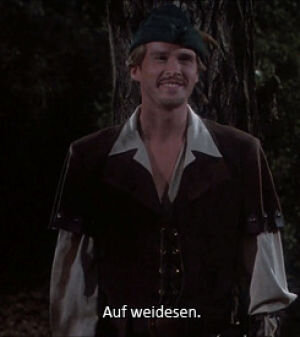The Marathon of the Middle
AKA The Plot Thinnens
Ever read a book that started out great only to have its potential dribble down its legs by the time you reached the end of act one?
Dude, same.
This may come as a surprise, dear reader, but writers often have a firm grasp of how they want to start and end their story but not always quite how to fill the spaces in between. It makes sense if you think about it. The bookends of the narrative are exciting!
When you’re beginning, well, you’re just starting. The project is new, you’re feeling fresh, and the world is your oyster. And at the end? Well, by the time you reach the end you’re so coked out on coffee, wine, whiskey, or some ungodly combination of the three that your fingers can hardly keep up as you bleed that climax onto the page.
The middle, though? Meh.
It’s necessary, of course, to get from the beginning to the end, but it’s just not sexy. And, like a once slim Adonis who stopped exercising as soon as he discovered the sweet joys of craft beer and smoked, succulent meats, some stories tend to start sagging in the middle. They simply lack the inherent excitement of the other parts and, worse, requires a significant amount of work to build up some connective tissue that carries you along from one point to the next.
This problem isn’t unique to new authors either.
I recall one particularly egregious example whereby I bought a book for a buddy of mine who was going through a Robinhood/Merlin phase (alright, Eric, I’ll concede the latter was not a phase but merely the continuation of a lifelong fascination). This particular venture was about Robin de la Hood’s origins, naturally. “The untold story” and all that time honored posh. I read the first couple of chapters and thought ding, ding, we have a winner!
Little did I know I was only partly correct.
You see, dear reader, this particular story shot out of the gate faster than a freshly popped champagne cork, filled with romance, political intrigue, betrayal, morally grey characters giving flashes of hidden nobility, and the oh-so-important teasing of deepest love.
Then the main character fucks off to a cave for all of act two.
Yup, you read that right.
Homeboy just had his family murdered, castle stormed, had his smoking hot redhead princess be kidnapped by a traitorous reeve and went “yo ho, yo ho, a hermit’s life for me” for well over two hundred pages.
Not to seethe, or plot revenge, or even wallow in self-pity, mind you. Oh, no. No, that would be far too normal. No, this motherfucker pissed off into the trees to build a bow. By hand. For months.
You wanna go bury your mom there, Robb? No? OK take your time. Not like she’s going anywhere.
You see, once our titular hero got off his royal ass and went back to work the end of that book kicked undiluted ass. The beginning was strong. The ending epic. And the middle? Judas priest that middle was so bad it haunts my waking hours even all these years hence.
How could this have been rectified? Well in this example Robin could have done literally anything to address how he felt about having just watched his parents be murdered and girlfriend taken captive as his childhood home went up in flames, but I digress.
In general, however, a writer should consider the middle of their story as the land of opportunity rather than a liability. With the right amount of spit and polish it may even be a highlight and give your readers some of the most memorable moments and, if you do it right, will feed directly from the start and into the finish to make a happy little cohesive narrative.
This is where subplots and secondary characters can be a lifesaver. Think of a typical Three Act novel. If you establish some new conflicts, characters, or goals after your much loved intro you can spend a significant portion of your Act Two developing those elements as a means to fill out your “middle” with set ups and payoffs (some of which could even lead directly into your Act Three). If done properly, this should be a natural and seamless integration allowing for the excitement and intrigue you established in your “opener” to build while still moving the overarching narrative to your final goal.
Failing that, consider fleshing out preexisting characters, their motives, their views. Hell, if pushes comes to shove, I’d even recommend expanding on the very world you’re attempting to build around them. Have characters comment on current affairs. Just don’t half ass your middle or else no one will stick around to see your killer ending!
You’ll note, of course, that I stuck through that Robin Hood story to the bitter end but that’s because I was on some kind of personal redemptive arc to prove to my buddy I hadn’t purposefully cursed his bookshelf with a turd. Most people who pick up a book are not going to grace your work with a similar bullheaded determination to soldier on through what amounts to the literary equivalent of tapioca pudding.
Do what you must but don’t leave it as a boring nothing, I beg of you. Your story will be better for it and your readers will too.


